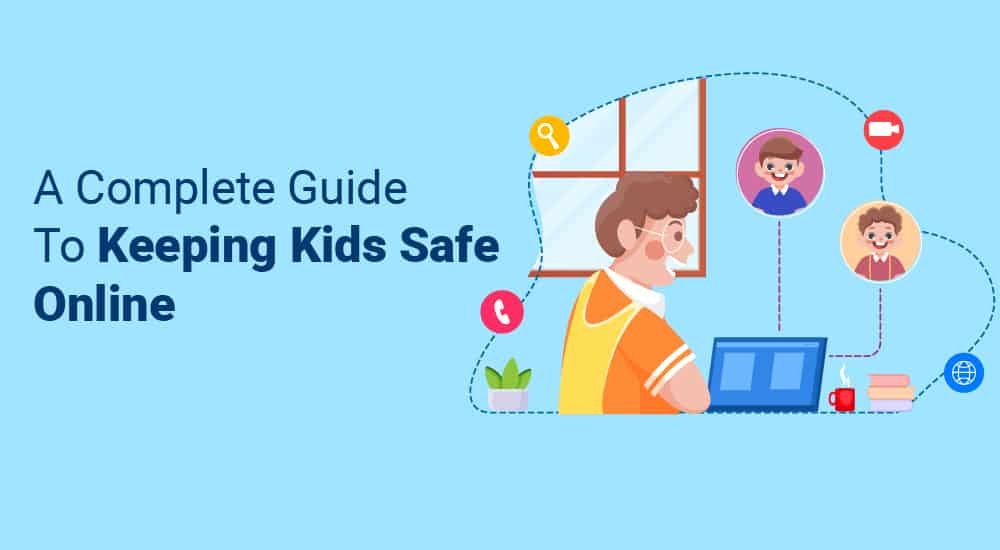
If you’re not a very tech-savvy person, the idea of trying to keep your kids safe online can be overwhelming.
Particularly, when it comes to a generation that’s been using technology long before they’ve been able to walk.
The internet is a scary place that can have a devastating effect on children if they use it wrong.
But it is also full of amazing resources that will expose your children to opportunities we, and all generations of parents before us, could never have dreamed of.
Maintaining the balance between their independence and their safety on the internet has never been harder.
But it is one of your key responsibilities as a parent. And it’s not one you should take lightly.
But how can you protect your children when they know far more about the computer than you do?
It’s not as difficult as you think.
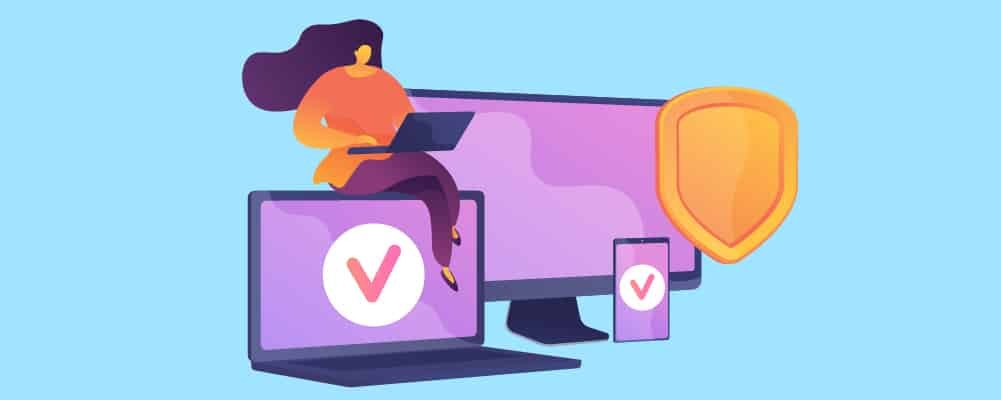
But it will require a little research and learning on your part.
We’re here to help.
This article is a complete guide to the dangers of the internet and what you can do to protect your children while they’re on it.
We’ll cover the different ways your children can access the internet, what you can teach them so they can protect themselves, and things you can do to take the pressure off them.
A Quick Warning Before We Start
There are a lot of horror stories about things that have happened to children while using the internet.
We will touch on a few of them briefly in this piece. While it is important to understand the dangers of the internet, we don’t recommend reading into individual cases, because you may find them quite upsetting.
It can also be tempting to refuse to let your children online. But it is best to teach them internet safety skills while they are young, rather than letting them learn the hard way later in life.
Table of Contents
- 1 Potential Dangers On The Internet
- 2 Ways That Children Can Access The Internet
- 3 Things To Look Out For
- 4 Cyberbullying
- 5 Social Media
- 6 Things To Teach Your Child To Stay Safe Online
- 7 Things To Do To Protect Your Children Online
- 8 How To Keep Kids Safe Online: Summary
Potential Dangers On The Internet
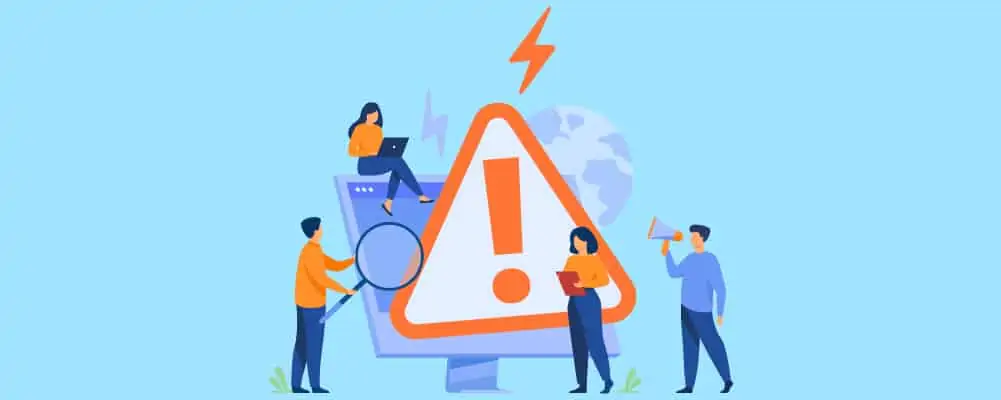
We are often told that there is no reason to worry about letting our children use the internet.
Here are some facts that will help you understand why, as a parent, you need to take responsibility for your children’s well being online:
- 1 in 4 children have been exposed to pornography accidentally while online
- Nearly 60% of teenagers have been approached by strangers online; 50% of that group has replied to at least one of those strangers
- 1 in 5 children have been sexually solicited while online
- Suicide rates are up in every age group of children using the internet and social media
- 9 out of 10 girls under 21 say that social media has made them consider starving themselves
The first step to tackling the issues of online safety is to educate yourself about the dangers online. You need the knowledge, before you can educate your children.
Below we have broken down 6 of the biggest potential dangers on the internet.
Exposure To Strangers
 Reading the fact above about how many children are talking to strangers online probably sent a shiver down your spine.
Reading the fact above about how many children are talking to strangers online probably sent a shiver down your spine.
As adults, it’s not something we think a lot about.
We argue with strangers on Facebook, meet people from Tinder about whom we know nothing, and we hire people on the internet frequently.
But children are a lot more naive when it comes to trusting strangers.
Lonely children or bullying victims will often respond enthusiastically to any show of kindness from a stranger.
There are many ways children can be exposed to strangers online. Many mobile games even have a chat function they can use.
Exposure To Scammers
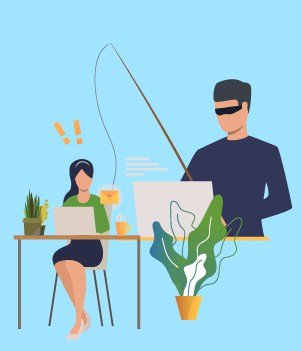 There are a growing number of scammers online who are targeting children.
There are a growing number of scammers online who are targeting children.
Again, children are more naive than most adults, and will often feel the need to help when people (even strangers) ask for it.
Compassion is a great thing, but scammers specialize in exploiting this in our children.
Most of our children know where we keep our purses or wallets.
It is important to be aware that there are many people trying to scam children out of money or other resources.
If you suspect anything like this, notify the police. This is a crime and the police should be aware of any attempts to scam your kids.
Exposure To Graphic Material
 Most children do not seek out graphic material on the internet, but a lot of them are exposed to it accidentally.
Most children do not seek out graphic material on the internet, but a lot of them are exposed to it accidentally.
Whether that is through clicking on an unknown link, or through sidebar ads.
The internet is a minefield of both pornographic and violent imagery.
The good news is that there are many websites that use child-safe advert filters (although these are not foolproof).
And many of the larger social media sites (particularly YouTube) are being forced by law changes to make their site more children friendly.
Exposure To Extreme Views And Radical Thinking
 There is a lot of information available to help religious families prevent their children from being exposed to religious radicalism.
There is a lot of information available to help religious families prevent their children from being exposed to religious radicalism.
However, a new form of radicalization has become more prevalent online over the last 5 years.
We are seeing increasing numbers of young men being indoctrinated into far-right extremist groups.
This is leading to growing rates of xenophobia, sexism, and homophobia in the under 18s.
This is leading to increased rates of violence and bullying among this age group.
Groups like this can provide you with information specifically relating to far-right recruitment techniques.
Deterioration Of Mental Health And Self Esteem
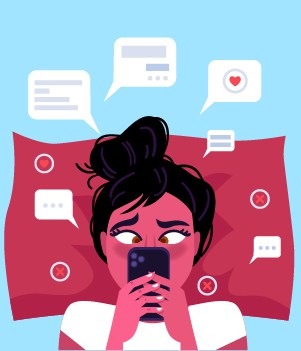 This is particularly prevalent in young girls and women.
This is particularly prevalent in young girls and women.
With girls as young as 6 reporting that they are unhappy with their body after being exposed to social media.
Very few countries have laws preventing the presentation of surgically altered or photoshopped bodies as natural online.
Both young boys and girls are being bombarded with images every day that make them feel like they aren’t good enough.
The mental health of under 18s is at an all-time low. We have sadly seen rises in depression diagnoses, eating disorder developments, and suicide rates. Support and validation from parents and peers can be crucial in preventing this.
Exposure To People They Know Taking Advantage Of Anonymity
Over 70% of children and young people have admitted to being affected by Cyberbullying. While some of this bullying is aimed at them by strangers, the majority of it comes from people they know.
One of the added problems of dealing with cyberbullies on the internet is many of them do it anonymously. The children will often have an idea of who is saying these things to them but have no way to prove it. Because of this they suffer in silence and feel helpless.
Many children may also feel inclined to say things online that they would never say to someone’s face. Particularly, when it comes to saying things they do not really mean. We have a whole section on how to deal with cyberbullying later in this article.
Ways That Children Can Access The Internet
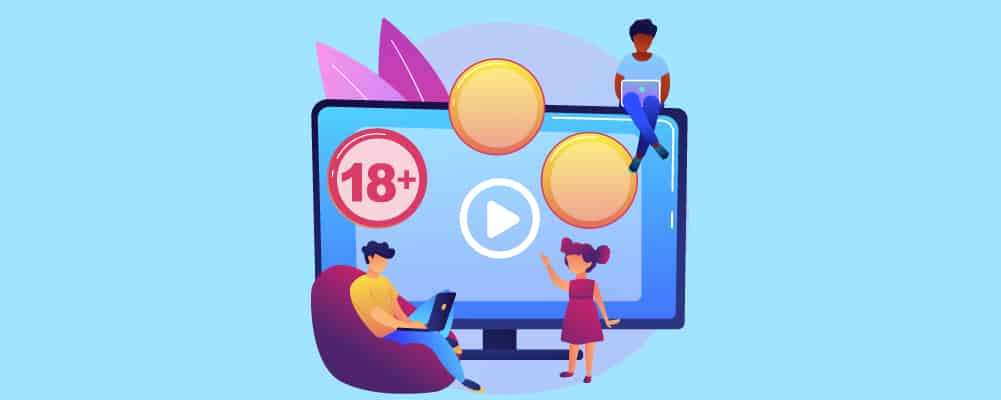
The second step in keeping your children safe online is to understand how they access and use the internet.
Over the last 10 years, the way we and our children use the internet has changed drastically. When we were young our house had one computer and we had to ‘dial up’ with the help of our parents if we wanted to use the internet.
If we wanted internet privacy we’d have to go to the library. If you told that to a seven-year-old today they would cry with laughter.
We have put together the following list of ways that your children can access the internet. This is not an exhaustive list, and by the time this is published and reaching you, a few new ways will likely be invented.
Because social media is such a huge part of our children’s lives online, we have covered it in a separate section later on. Don’t worry, we’ve got advice for that issue too.
Mobile Games
We’re beginning with mobile games as this is the method that surprises most parents.
Most mobile games offer some kind of chat function. These chat functions are often hard to put child locks or filters on.
The best way to counteract this exposure is to play the game yourself before letting your child use it.
If there is no way to remove the chat function but you would still like to let your child play the game, why not play it together so you can monitor who they are communicating with.
Other Mobile Apps, Phones, And Tablets
If your child is using a phone or tablet without supervision then it is a good idea to put password locks on all the apps you do not want them to use.
These apps are designed to be easy to use, and children are quick learners. It is possible they will be able to access unwanted parts of the internet by pushing a few buttons.
You might want to consider a tracking app, so you can keep track of your child’s movements online. Read How To Track My Daughter’s Phone Without Her Knowing for more information. Obviously, everything in that article can apply to sons, too.
Game Consoles
The majority of game consoles offer a web browsing app. These apps are very hard to put parental controls on. The best way to deal with this is to put parental controls on your wifi network rather than on individual devices.
The other danger of using a game console is that many games offer online playing options. Through these online modes, players can either choose to play with people they know (although some games don’t offer this option) or to be randomly paired with strangers.
These random online groups are never monitored or vetted. Many young players experience cyberbullying while playing online, both with strangers and friends.
It is not uncommon for your predators to be posing as other children in order to make connections with these online game modes.
Desktop PCs And Laptops
This is probably the method of internet access most of us are more familiar with. But this doesn’t mean that using a laptop or PC is without danger.
In fact, using a PC or laptop is one of the easiest ways for children to be exposed to graphic imagery. You should also be aware that this gives them access to webcams.
Make sure that you have a firewall installed that will protect your computer and webcam from being remotely accessed.
Things To Look Out For

The internet is both a wonderful resource and a terrifying place. It can simultaneously offer its users access to free learning resources and access to pornography sites, or instructions on how to make a bomb.
The third step of gaining control of your child’s online safety is to access how you let them use the internet. We understand that the older our children are the less willing they will be to share their time on the internet with their parents.
However, teaching them skills and mindsets before they reach this stage can set them up well for using the internet on their own.
We’re not here to have a go at anyone, we understand how hard being a parent is, and how most of us don’t have time to constantly monitor our children.
However, we would like to talk about why supervision is so important, and cover some behavior patterns to look out for when you give your children independent online time.
Here are a few ideas of how to make the supervision of your children’s online behavior easier:
- Keep devices with internet access in family areas, rather than their bedrooms
- Encourage them to use a computer rather than a phone; watching over their shoulder will be easier this way
- Check their internet history, and discuss any sites they shouldn’t be visiting
- Check out any sites they are using regularly yourself
- Ask them not to use headphones while talking to others in-game or in chat rooms
- Get the screen names of their friends and question them about names that you don’t recognize
- You might consider putting a nanny cam in their room, to keep an eye on them
By following the tips above when they first start to use the internet you’ll be able to teach them the wrong and right ways to stay safe online.
When your children have more access to the internet on their own, what are some behavior patterns you should be looking out for?
If your child is doing the following then you may need to investigate their use of the internet further:
- If they start using the internet exclusively on their phone or a private device
- If they regularly shut down apps, videos, or websites when you enter the room
- If they regularly delete their internet history
- If they are repeatedly using chat rooms that aren’t connected to any games, or activities
- If they only use private browsing
- If they install VPNs or use proxy sites (older children/teens are most likely to do this)
We will go into more detail later, but preventing your children from using these systems is relatively easy. What may be more difficult is the discussions you will need to have with your children if you notice these behaviors.
Cyberbullying
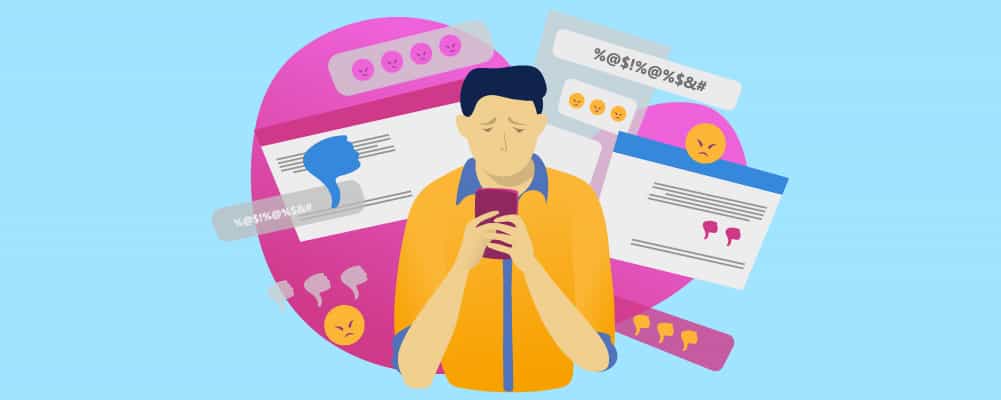
Many parents list their main online focus as keeping their children safe from strangers. This is something we actively encourage.
But teaching children how to cope with cyberbullying often falls by the wayside.
We have also seen a lack of awareness among children about why it is wrong to engage in cyberbullying.
In this section, we are going to talk about both how to keep your children safe from cyberbullying online and how to prevent them from taking part in or inflicting it on others.
What Is Cyberbullying?
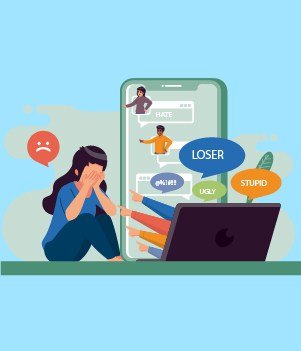 Cyberbullying is an activity that takes place online which makes the victim feel scared, alone, angry, or upset.
Cyberbullying is an activity that takes place online which makes the victim feel scared, alone, angry, or upset.
This type of bullying can take many forms. Sending aggressive texts can be considered cyberbullying.
As can posting compromising information, pictures, or videos on social media. ‘Catfishing’* is another common form of cyberbullying.
Cyberbullying has a similar, if not more intense, effect on our children than traditional bullying.
There are two major issues that make it more dangerous than traditional bullying:
1.The bullying does not end at school.
If the bullying was happening face to face (often cyberbullying can come hand in hand with face to face bullying as well) then the child would be given some rest bite after they leave the school building.
When it comes to cyberbullying the abuse often continues long into the night. Where a child could feel safe from the bullies in their home, this is no longer the case.
Cyberbullying allows for the child to be followed everywhere, all their safe spaces are invaded and they can become overwhelmed.
2. Cyberbullying is often a lot crueler than face to face bullying.
It is a lot easier to say things to someone else through a screen than to say it directly to their face. Bullies have existed forever, technology provides them with a set of new, more powerful weapons.
*Catfishing
The term ‘Catfishing’ refers to pretending to be someone you’re not on the internet. This can include posing as a fake friend on the internet or stealing someone else’s identity. These methods are used by scammers and bullies.
You should definitely spend some time talking to your children about catfishing when introducing them to the internet. And encouraging them to talk to you if they are approached by anyone suspicious.
Here is a great resource that can help you and your child to spot people lying about who they are online.
How Cyberbullying Affects Our Children
The effect that cyberbullying has on our children is why we should be taking this issue more seriously as a society.
As children lose their home as a safe space thanks to cyberbullying, we are seeing the mental health of young people taking a nosedive. Eating disorders, self-harm, and suicides are all on the rise.
One of the hardest parts of dealing with cyberbullying is that it’s hard to police. Children will often suffer in silence as they think reporting the issue will only make life harder for them. Cyberbullies will often use that as a threat.
So, how do we work out if our child is a victim of cyberbullying and what can we do about it? We will talk about that next. As well as discussing what to do when your child is cyberbullying others.
What To Do If You Think Your Child Is Being Bullied Online
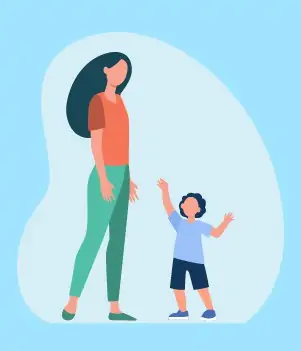 Having a child that is being bullied is one of the worst things that parents can go through.
Having a child that is being bullied is one of the worst things that parents can go through.
It is hard not to feel helpless. Particularly, when it comes to cyberbullying.
We hope that this section of the article will give you some confidence.
As a parent, there is a lot you can do to help your child when they are being cyberbullied.
Let’s start with signs and behavior patterns that might indicate that your child is currently being cyberbullied.
- They won’t talk to you about what they are doing online
- Their performance at school dramatically decreases
- They are angry more frequently
- They aren’t sleeping well
- They are crying more frequently
- When they use the internet or their phone they come distressed or upset
- They withdraw from people who care about them (family, friends, teachers)
- They start eating less or more
- They want to stop using the internet or playing group video games (particularly if they loved doing this before)
- Getting text messages or IMs scares or upsets them
- They don’t want to get out of bed
- They starting trying to avoid school or other group social activities
In an ideal world, your child would speak to you about what they were experiencing. However, if they do not then you should not see it as a failure on your part. Think back to your own childhood and how hard it felt to share issues like this with your own loved ones.
Your child may be talking to their friends about their issues. It may be a good idea to talk to the parents of their friends, as they may be able to help you investigate what is happening to your child.
Dealing With The Issue Of Cyberbullying
So, if you have discovered that your child is being cyberbullied (or you have a suspicion that they are), how do you begin to deal with the problem?
Well, the likelihood is that your child is being bullied by someone at school or at a club they regularly attend. If this is the case, then this is really good news for you. Schools and clubs can take a lot of action to help you stop cyberbullying.
Your first step should be to get in touch with your child’s teacher or club leader and let them know what is happening. Most of them will already have a process in place for dealing with cyberbullying.
Even if your child is not being bullied by someone at school we recommend talking to their teacher. They have probably noticed a change in your child’s behavior, and will be able to offer them support, encouragement, and compassion during the school day.
After you have done that, here are some practical steps you can take to help your child instantly:
- Block the bully/bullies – This should be relatively simple. Both IOS and Android have a number blocking feature. All social media accounts will provide this option too.
- Make your child spend a few days offline – This will give your child a chance to escape and your home will start to feel like a safe space for them again.
- Substitute activities they enjoy – During those days you ask them to stay offline, try and distract them with other activities that make them happy. So that they don’t feel lonely, why not invite their friends round to see them in person.
- Enquire about their emotional needs – Any kind of bullying can be traumatic, particularly at such a young age. Talk to your child about how they are being, they may benefit from spending some time with a therapist.
- Join them in their online spaces – By this, we mean ‘friending’ or following your child on their social media and chatroom accounts. The best thing to do is just keep an eye on them. Don’t abuse the position by actively engaging with their accounts. But they will know that you will see anyone bullying them.
- Do a refresher course on online safety together – This can be as simple as watching a 10-minute video together or even talking them through some of the main points from this article.
What To Do If You Think Your Child Is The Bully
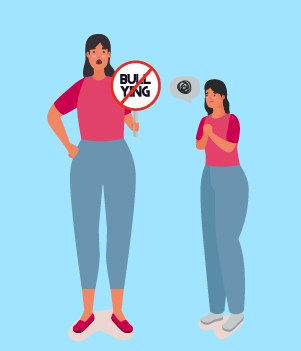 As a parent, it can be really tough to find out that your kid is a cyberbully.
As a parent, it can be really tough to find out that your kid is a cyberbully.
You should remember that this is no reflection on you as a parent.
It is more likely as a result of the friends around them, and the power the internet gives our children.
However, it is something you need to address otherwise they will not stop.
Here is what you can do to help with this process:
- Remind your child that bullying is wrong and that things done online still have consequences in real life
- Be firm with them, do not justify their excuses, and make it clear to them that they are the ones in the wrong
- Some people find it helpful to restrict internet access or drastically reduce it as part of their child’s punishment. Whether or not you do this, you should press on them that it is a privilege to be allowed access to the internet and that those privileges can be removed if the behavior continues.
- Reach out to the bullied child and their parents personally. Apologize and tell them that you are working on the problem. This will help the child to recover from the pain they have been through.
- Talk to your child’s teachers and other adults in their life to try and find out what has led to the bullying. It could be a good idea to have your child talk to a therapist about why they chose to take those actions.
- Follow up with the other child’s parents and with teachers to make sure the bullying has stopped. If it hasn’t you may need to take things further with your child.
Social Media
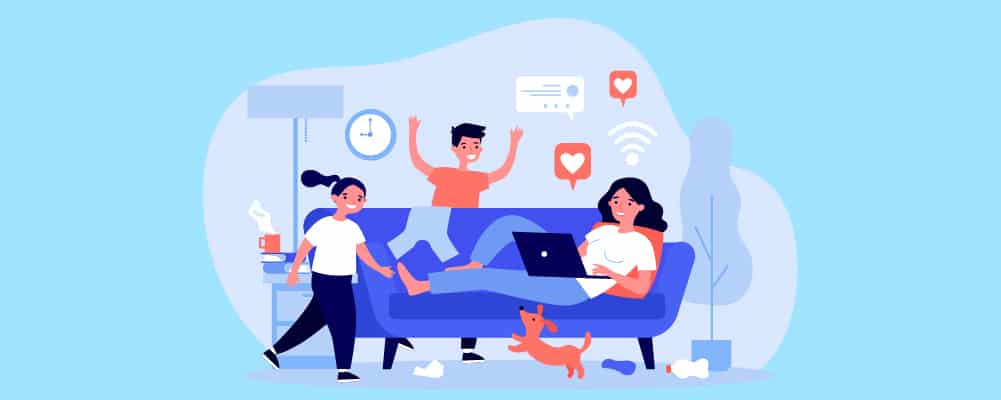
97% of teenagers use at least one of the main five social media platforms. Over 45% of them admit to it negatively affecting their mood and mental health on a regular basis.
Multiple studies have observed links between high levels of social media use and depression or anxiety symptoms. Social media has been proved to do the following in children and teens:
- Disrupt sleep
- Expose them to graphic images
- Expose them to radical views
- To increase the likelihood of them experience cyberbullying
- Low self-esteem
- Heighten anxiety
- Increase frequency of suicidal thoughts
- Increase chances of developing an eating disorder
- Provide unrealistic expectations of body standards, lifestyle, and mental health
Much of the content on social media is not appropriate for children. Particularly platforms like Facebook who refuse to remove far-right extremists and fake news from their platform. Or Twitter who has no nudity or pornographic content ban.
We have discovered that very few parents are aware that most social media platforms have a minimum joining age. They can be unaware because they have been misled or because they have not done their research.
Thanks to changes in the data protection laws in Europe, most platforms have enforced a global age restriction.
To use Facebook, Instagram, Twitter, Tick Tock, Snapchat, and other similar platforms you must be over 13.
WhatsApp’s users must be over the age of 16.
If your children are on these platforms before reaching the minimum age we recommend you delete their accounts. As well as talking to them about the fact that these laws have been put in place to protect them.
The platform to be most careful about is YouTube. There is no age restriction on watching a YouTube video. A person must be 13 to have their own account, but not having an account will not prevent you from watching what you want.
You can create a children’s specific account that is attached to your own. But these accounts do very little to filter what your children are watching.
We would recommend watching YouTube with your children when they are just beginning to use the internet. As well as, not allowing them access to the YouTube comment section.
Things To Teach Your Child To Stay Safe Online

Now, we have reached the really practical section of the article. Feel free to treat this section as a checklist for how to approach starting your child’s journey to online safety.
Keep Location Private And Avoid Giving Away Personal Information
 One of the first things you should teach your child about online safety is to never give away any information about where they live.
One of the first things you should teach your child about online safety is to never give away any information about where they live.
Someone who is interested in finding them can do it with a very small amount of information.
Remind them that they shouldn’t give away their surname, address, or where they go to school to people they don’t know.
They should also be encouraged not to share any other personal information, or pictures of themselves online.
Even with their friends as most social media sites can be accessed and viewed by strangers.
They should tell you and block anyone who tries to get this kind of information out of them.
Avoid Talking To Strangers
 As we mentioned above, over 60% of children admit to being approached by strangers online.
As we mentioned above, over 60% of children admit to being approached by strangers online.
The real number is probably much higher.
Even worse is that over half of these children admitted to messaging the strangers back.
Again the real number is probably much higher.
You can explain to your child that not every stranger is dangerous but they should not engage with them online.
You should also encourage them to let you know if a stranger tries to communicate with them online.
They should never video call with or meet up with strangers that they have met online.
You should recommend that they block any strangers that try to talk to them. Particularly, if your children are very young.
Things To Do To Protect Your Children Online
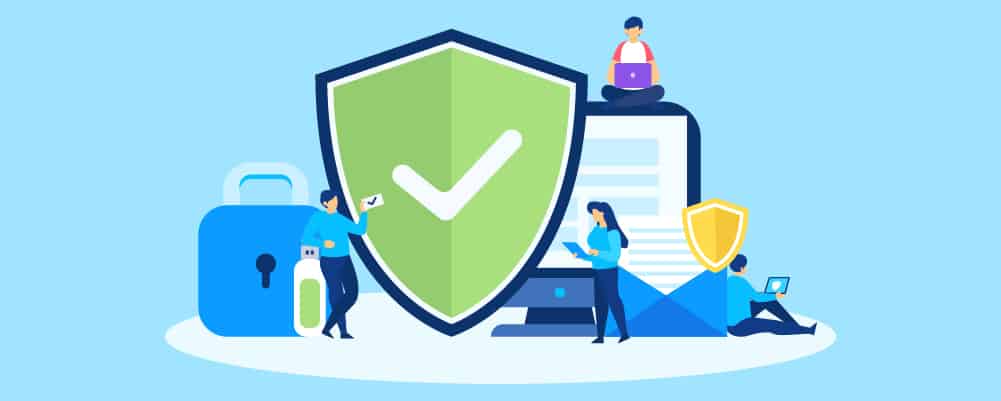
In this section of the article, we’re going to talk you through the practical things you can do to make your children safer online. With these plans in place, you can relax a little more, knowing that you have put a lot of great safeguards in place.
Place Computers/Devices Where You Can See Them
 One of the easiest ways to encourage your kids to be safe online is to make sure they’re using the internet somewhere that they can be easily monitored.
One of the easiest ways to encourage your kids to be safe online is to make sure they’re using the internet somewhere that they can be easily monitored.
This way they will be less likely to take risks. We’re all better behaved when we think we’re being watched.
On top of this, we would recommend encouraging them to use the internet on a computer, rather than on a phone.
Simply because it is easier to monitor them this way.
Where should you keep these devices? Well, it’s best to keep them near where you would like to spend your time at home.
You may want to put the computer in the living room or within earshot of your kitchen. If that is not an option, consider installing a small indoor security camera in their bedroom, to keep an eye on them.
We would also recommend that you discourage your children from using headphones while online.
If you are close by when they are using the computer they can also call on you if they need help, or if they are feeling uncomfortable with what they are seeing.
It is also easier for you to step in if they are misbehaving.
Learn More About Data, Online Privacy Rules, Etc.
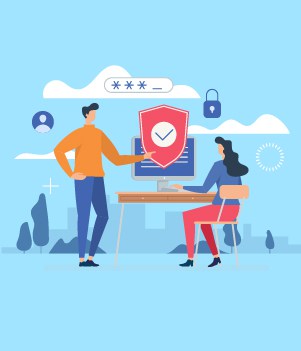 While this may seem like an overwhelming concept, the more you learn about these topics the better equipped you are to keep your children safe online.
While this may seem like an overwhelming concept, the more you learn about these topics the better equipped you are to keep your children safe online.
We mentioned above that teenagers can get pretty creative when it comes to hiding what they are doing online.
The best way to keep on top of this is to research common methods (like installing a VPN) and learning how they work.
If you understand these methods and know what to expect you can work around them.
Kids will often know they are engaging in risky behavior, but do it anyway. In those instances, they will do what they can to hide this from you.
You need to be aware of ways they can hide their activities, so that you can see through them and keep them safe, even when they don’t know they need you to keep them safe. As a last resort, you might even consider spying on their phone, but be aware that this is a serious invasion of privacy.
Spend Time With Your Kids Online
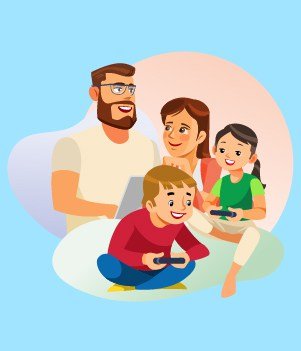 Kids learn best by watching and copying others.
Kids learn best by watching and copying others.
A really great way to teach them how to behave online is to set an example for them.
If they want to play games online, play together.
Choose to watch YouTube videos on topics that interest you both.
Show them how you conduct yourself in situations they will commonly experience and they will learn from you.
It might also be beneficial to show them examples of online scams, attempt at phishing, etc.
Showing them exactly what to avoid and what to look out for, with real-world examples, can go a long way toward preparing them to deal with those things on their own, when you are not around to help them.
Discuss The Dangers Of The Internet With Your Child
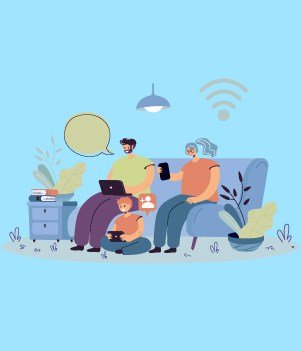 Many people we talk to think that it is a good idea to keep things like this from their children.
Many people we talk to think that it is a good idea to keep things like this from their children.
It is mostly because they want the best for their child. However, children are curious and like to learn.
If you discuss the dangers with your child they can learn at a pace you have set, in a safe environment.
This is much better than them discovering the dangers for themselves online, and not being adequately prepared.
Knowledge is power, and it is one of the best ways for your children to look after themselves.
As mentioned above, show them real examples of situations where someone tried to scam you or otherwise cause you harm online.
Know Your Kid’s Online Friends
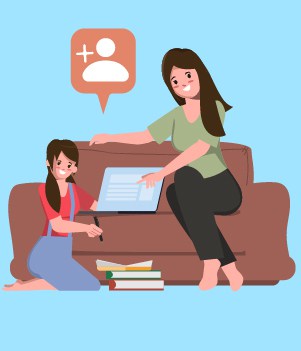 Most of the time your kids will be interacting with people they know online.
Most of the time your kids will be interacting with people they know online.
If the interaction is friendly then this won’t cause many problems.
However, kids are very good at picking up what we approve of.
You may find that when you ask your children who they’re speaking to they will always say their friends because they know they can’t get into trouble for that.
This is why we suggest getting together with the other parents and guardians in your child’s friendship group.
Between you, you can swap screen names and activities. Once you have this information you can notice when your child is not talking to a friend and remind them of the danger of talking to strangers.
Set Parental Controls On Computers And Devices
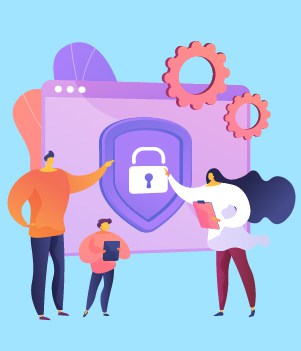 There are many different ways to install parental controls on your computer and household devices.
There are many different ways to install parental controls on your computer and household devices.
The easiest way to do this is to ask your broadband provider to add these protections and filters to the wifi itself.
There are ways to prevent sites from being accessed without a password.
In the UK all new broadband contracts come with these filters pre-installed unless otherwise specified.
You will also be able to install filters like this through your firewall.
Windows and IOS also let you set up user profiles for children that come with parental controls pre-installed.
Password protecting apps that you do not want them to use is also a great way to set some boundaries for them online.
Check out this resource for more information on installing parental controls.
How To Keep Kids Safe Online: Summary

The best way to keep your child safe online is to help them to understand what they should and shouldn’t be doing on the internet. You can do this by spending time on the internet with them, allowing them to learn by following your example.
You can back this teaching up with a non-intrusive observation of the time they spend online. And by installing parental controls that will prevent them from accidentally being exposed to indecent content.
Installing this awareness in your children from an early age will help them to enjoy a lifetime of safety online. Remind them not to engage with strangers and that you are always there to support them if they need you.
- A Guide To Protecting the Elderly Online - September 14, 2021
- Imou Security Camera Review: For Complete Peace of Mind - August 5, 2021
- Guide To Anonymous Browsing - July 15, 2021
Leave a Reply